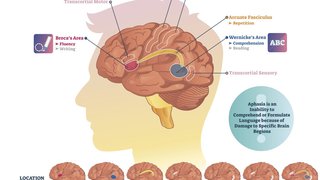Most people with depression never get treated. But what if everyone got screened at their regular checkups?
by Peter Simek | Illustration by Stephanie Dalton Cowan

A little after 10 a.m. on June 5, police responded to a call made by a housekeeper at an upscale Manhattan apartment. Inside, they found the body of legendary fashion designer Kate Spade, who had hanged herself in apparent suicide. Spade left behind a note addressed to her husband and daughter, yet nothing she wrote could answer the question that devastated her friends and family and rang through media reports in the following days: Why would a wildly successful and seemingly happy 55-year-old mother take her own life?
Just three days later, this same scene played out in a hotel room in France, where the body of another beloved celebrity, Anthony Bourdain, was found. A similar refrain began to play out: initial shock and questions that soon gave way to reports that both celebrities were battling their own quiet wars with depression.
The news came as a surprise to many, but for Dr. Madhukar H. Trivedi, it was simply additional confirmation of the troubling health trend he has witnessed in his daily work as the Director of the Center for Depression Research and Clinical Care, a cornerstone of the Peter O’Donnell Jr. Brain Institute at the University of Texas Southwestern Medical Center: that depression goes undetected and untreated on a colossal scale.
According to Trivedi, 70 to 80 percent of people suffering from a mental health condition never see a mental health professional, and suicide is only one of the consequences of leaving such a condition untreated.
It’s difficult to imagine that statistic in the context of any other illness. Imagine if 70 percent of people suffering from a life-threatening cancer never saw a doctor. Imagine if 80 percent of people with a chronic lung condition never sought treatment, and instead slowly deteriorated in silence.
“There’s a lot of fear, a lot of uncertainty, a lot of confusion, a lot of ignorance, and therefore stigma,” says Trivedi. For that, he blames prevailing social attitudes toward mental illness and insufficient mental health training and cutting-edge research within the medical community.
But he also has a solution.
There are two questions you can ask someone that indicate they may be depressed:
- Do you feel sad?
- Have you lost interest in doing things that used to give you pleasure?
That’s what Trivedi’s Patient Health Questionnaire-2 (PHQ-2) asks patients in an attempt to identify two main anchor symptoms of depression.
“Those two things are more than enough,” Trivedi says. “For those who screen positive, there is a diagnostic checklist you have to go through. Generally, about 14 to 15 percent of people, sometimes 16 percent of them, screen positive, and about 12 percent have clinical depression.
“Unfortunately, for the longest time, people have only addressed depression when there is a crisis or when there is a significant dysfunction, like when they lose their job or they get divorced,” Trivedi says.
But if those two questions were asked as part of routine medical care, Trivedi says, doctors would have an effective way to screen every patient who walks through their doors for potential mental health issues — meaning diagnosis would be a basic part of general health care. The stigma surrounding these issues would dissolve, and more people would get help before, not after, they need it.
“When you go to see a doctor, they always measure your blood pressure. We want to make that happen for depression and anxiety and bipolar disorder in primary care and pediatric practices,” Trivedi says.
But he says the largest barrier left to implementing the test may be the medical community itself.
When Trivedi was graduating medical school in the mid-1980s, Prozac, Xanax, and other antidepressants were just coming onto the market. The new drugs ushered in a new era of treating depression like an illness, with medicine; but there was still a lot of uncertainty about exactly how to do that. Research was yet to determine which forms of therapy paired with which pills produced the best results in individual patients, which meant drugs were prescribed on a trial-and-error basis with no repeated measurements, often resulting in long and uncomfortable experimental periods for the patient.
At his lab at UT Southwestern, Trivedi spent the next decade building a body of research on the impact of different medications, psychotherapy, exercise, and neuromodulation techniques in an effort to build a comprehensive resource for doctors when treating depression. He coordinated one of the largest depression studies ever done, the STAR*D trial, funded by the National Institute of Mental Health, to evaluate treatment outcomes. They also explored the effects of exercise and cognitive behavioral therapy.
“It became very clear that depression is a difficult-to-treat disease,” Trivedi says. “The treatment choices make a difference, and how we make those treatment choices is even more important.”
But the more pressing challenge, Trivedi observed, was directing patients into treatment plans in the first place. While fine-tuning treatment plans, Trivedi became concerned about that 70 to 80 percent of people with depression who were never even going to get treatment.
So he took a step backward, and began working to develop diagnostic tools and treatment algorithms that could help doctors accurately diagnose patients with mental illness and help them get appropriate treatments.
“Unfortunately, for the longest time, people have only addressed depression when there is a crisis or when there is a significant dysfunction, like when they lose their job or they get divorced.”
Dr. Madhukar H. Trivedi
Trivedi knew he needed to create a tool that primary care doctors and pediatricians could use in their day-to-day practices.
If he could achieve that, it would sidestep a lot of the reasons why people don’t get the help they need: reluctance to seek help or admit they have a problem; a lack of resources for them to find a psychiatrist or therapist, or even to know what help they need; and the prevailing social attitudes that cause depression and other disorders to go unnoticed or ignored.
“The challenge is how to do it without two hours with every patient because the doctors can’t afford it,” Trivedi says. “And once you diagnose, how do you treat, and what do you do for crisis; and if a patient is suicidal, what do you do? Therefore, it became very clear that we have to help them with some way of figuring out how to do it.”
Three years ago, the U.S. Preventive Services Task Force issued a recommendation that all providers screen their patients for depression once a year and have adequate systems in place to treat those who tested positive. After decades of working on this initiative, Trivedi knew from experience that this wouldn’t be easy.
The first thing he developed was a computer-based platform that could accurately pinpoint through a series of simple questions whether patients required further mental health care. But doctors had trouble incorporating Trivedi’s tool into their workflow.
As it turned out, directing more patients toward treatment for depression would require shifting the culture within clinical care. Trivedi understood that one of the major challenges he faced, on top of getting people to see the importance of the screenings, was the basic workflow of the doctor’s office. If he was going to create a solution, it had to be as simple and easy to adopt as possible.
That’s how VitalSign6 — a web-based application that screens patients with the PHQ-2 — was born. If a patient answers no to those two questions, there is a 98 percent likelihood that they are not at risk for depression, and no further steps are necessary. They’ll be screened again at their next checkup. If a patient screens positive, the application automatically leads them through a series of follow-up health care assessments, leading to more accurate and effective diagnosis.
But Trivedi says getting more patients diagnosed will only work if there’s a standardized process for treating depression. VitalSign6 doesn’t just systematically screen for depression; it also gives providers assessment tools that measure critical associated symptoms, and offers clinical decision support as part of its measurement-based treatment model, which uses standardized assessments of depressive symptoms, medication side effects, and patient adherence to guide scientifically vetted treatment decisions.
“Before VitalSign6, doctors would not use measurements, or they would let their nurse do the measurements,” he says. “I had a clinic I went to, and they had measurements every time, and I’m going, but why isn’t anything changing? The front desk gives them the forms to fill out, but they leave the measurements that I wanted for a later point. Then, they go and see the nurse. Then, they go see the doctor. As the patient is coming out, the front desk person calls the patient and says, ‘Before you go, can you fill these things out?’ So the treatment was already decided, then they do the measuring.”
VitalSign6 allows providers to enhance health care access and the standard of care for those affected by depression by equipping them with innovative tools to identify, diagnose, and treat depression and related disorders.
“With VitalSign6, by the time the doctor comes to the exam room, those questions have already been answered, so their time with the patient about exploring all of this is minuscule,” he says. “The doctor then opens the chart up, talks to the patient, and confirms the diagnosis or makes the treatment decision — guided by a scientifically based algorithm — and then that’s the end of it.”
The end of it, for Trivedi, means everyone has the opportunity to have mental health issues recognized and the resources to get the right treatment.
70% to 80% of people suffering from a mental health condition never see a mental health professional.
As technology and the culture around mental health treatment begin to catch up, Trivedi’s lab has been able to test new ways of analyzing and diagnosing the causes and symptoms of depression. Over the last 10 years, the lab has been at the forefront of identifying new technology to develop brain and blood markers that could be used both to create universal tests to diagnose patients and to identify the best methods of treatment.
These brain and blood markers are further proof of the research Trivedi has been compiling over his career: that depression can and should be treated as a medical illness.
Trivedi has incorporated VitalSign6 into his lab’s two latest depression studies, which will identify 2,500 people with depression or bipolar disorder and 2,500 people at risk of developing depression, with the goal of fine-tuning tests for diagnosis and identifying effective treatments for depression. Eventually, Trivedi believes doctors will be able to screen for depression like they might heart disease through universal brain and blood tests.
His team is partnering with schools and clinics around Dallas to identify potential study participants using VitalSign6, in hopes that incorporating the tool into a clinical setting will begin to shift the culture around mental health screening in the field and open doors for the computer application to be used in general practice.
“One challenge is that changing human behavior is very hard, and we are asking the whole health system to change their behavior,” Trivedi says. “The second part is doctors have to be convinced that this is helpful for their patients, and it takes some time to use it before you recognize that this is helping patients.”
There is still a lot of fear, uncertainty, confusion, ignorance, and stigma surrounding mental health, Trivedi says. Depression still primarily enters the popular conversation not because of awareness marches or fundraising drives, but through the tragedies that the disease too often inflicts on people whose battles go unchecked.
Trivedi hopes his test will help change that. He sees a future when it will not be deaths like Spade’s and Bourdain’s that bring the disease into the spotlight, but a better awareness of mental health issues that allows them to be treated, not ignored.











